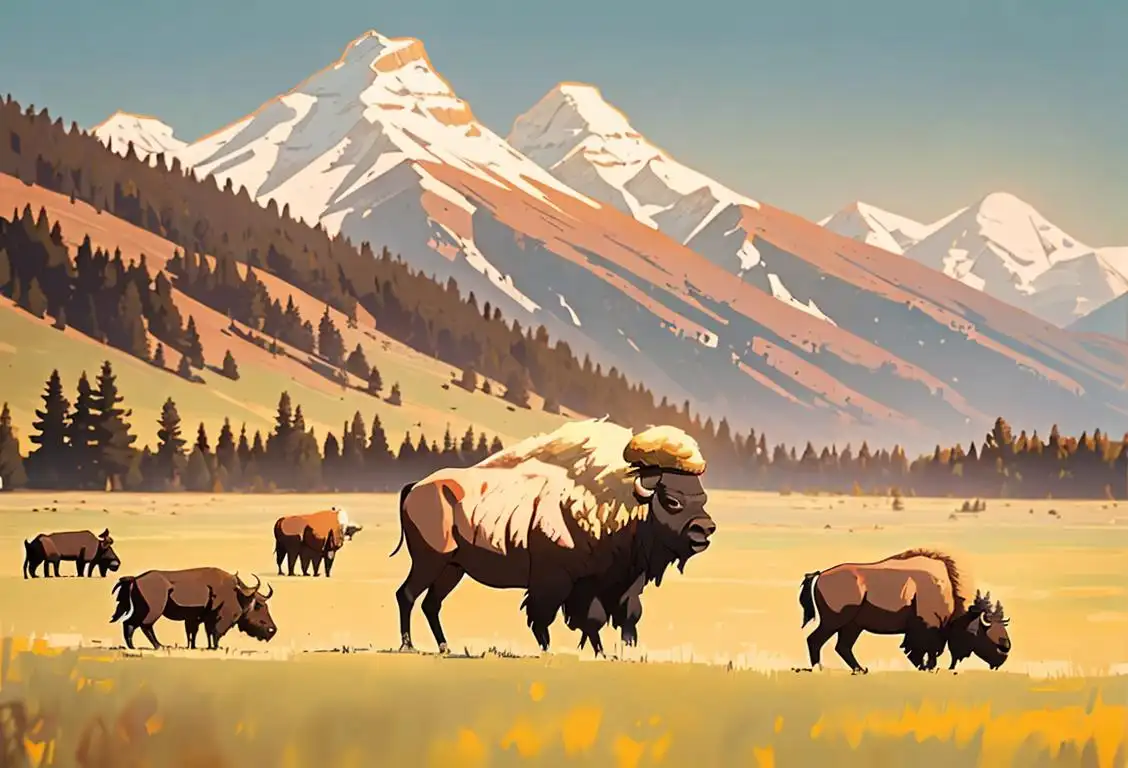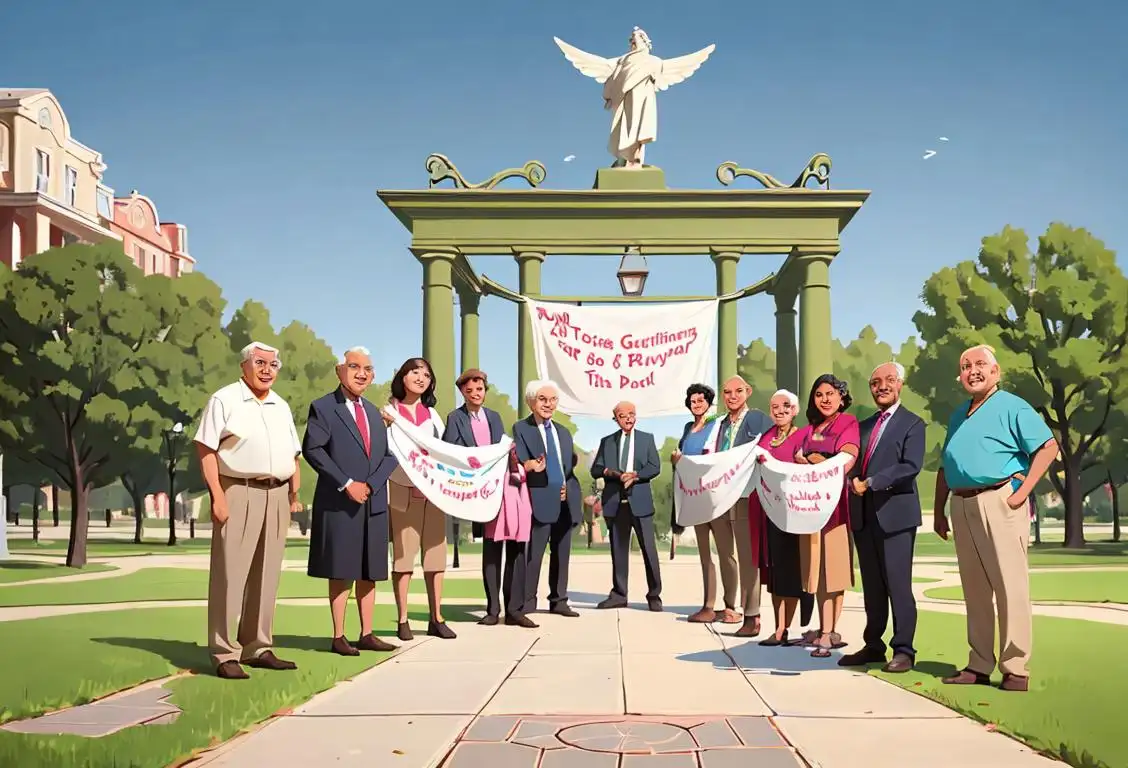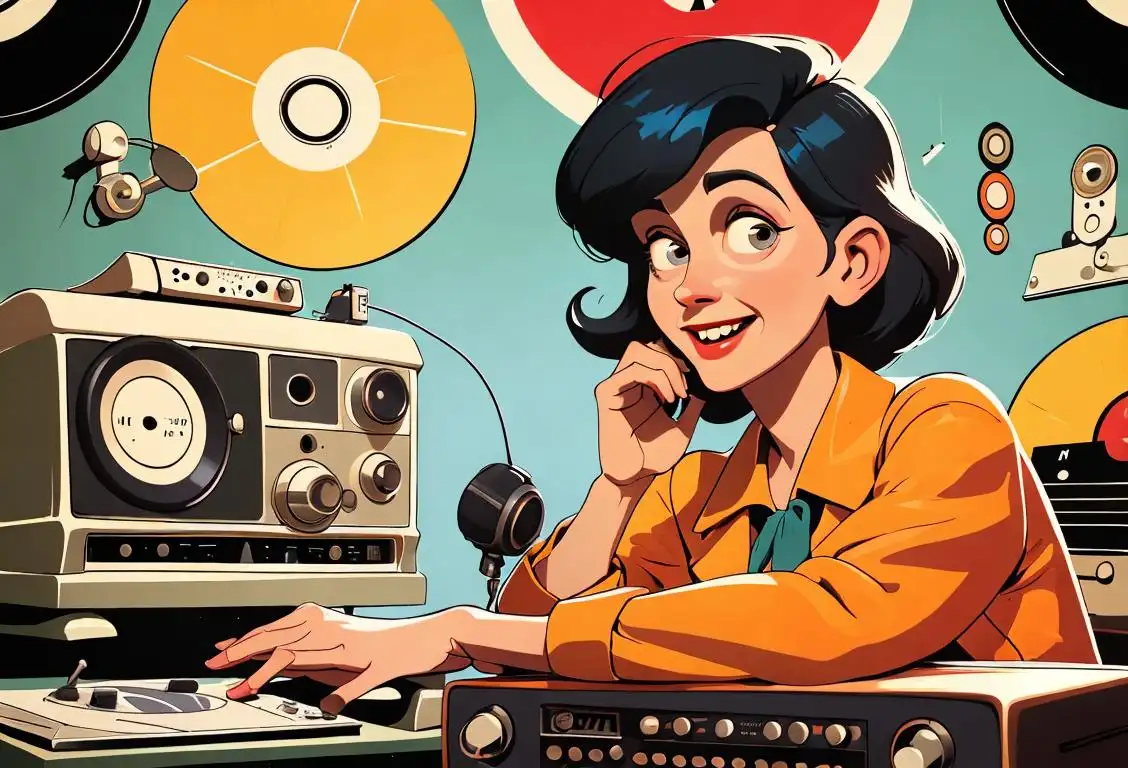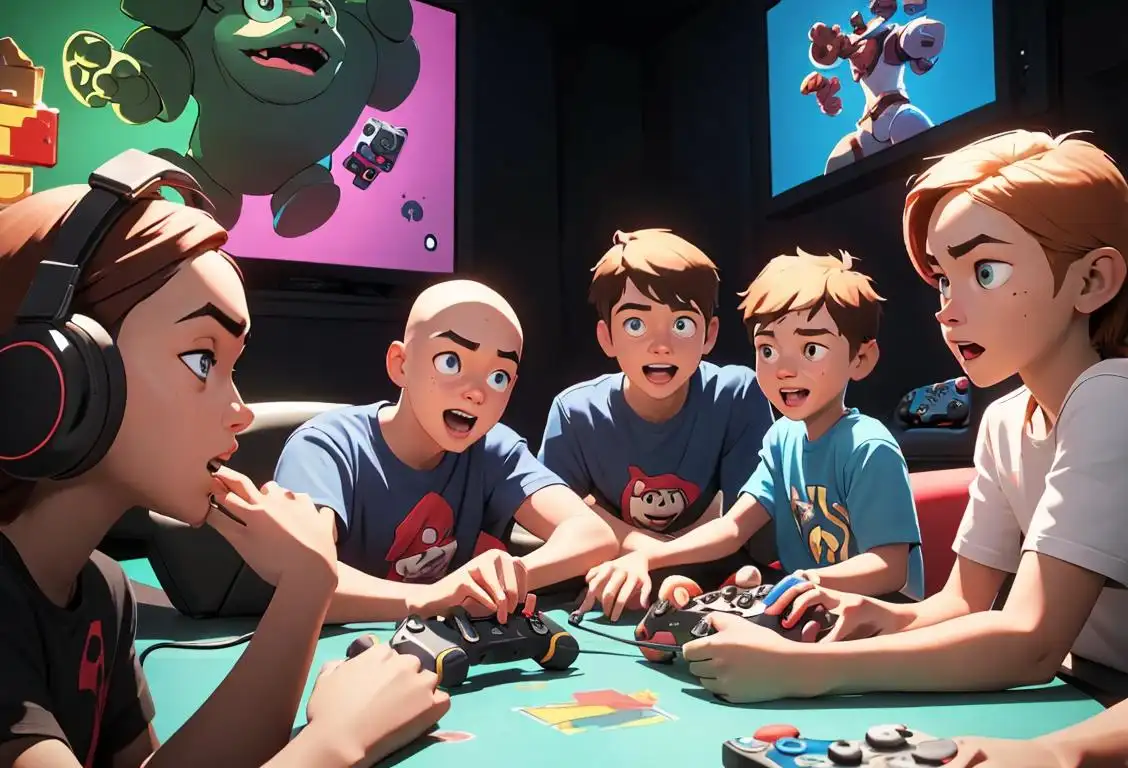National Cancel Your Cable Subscription Day
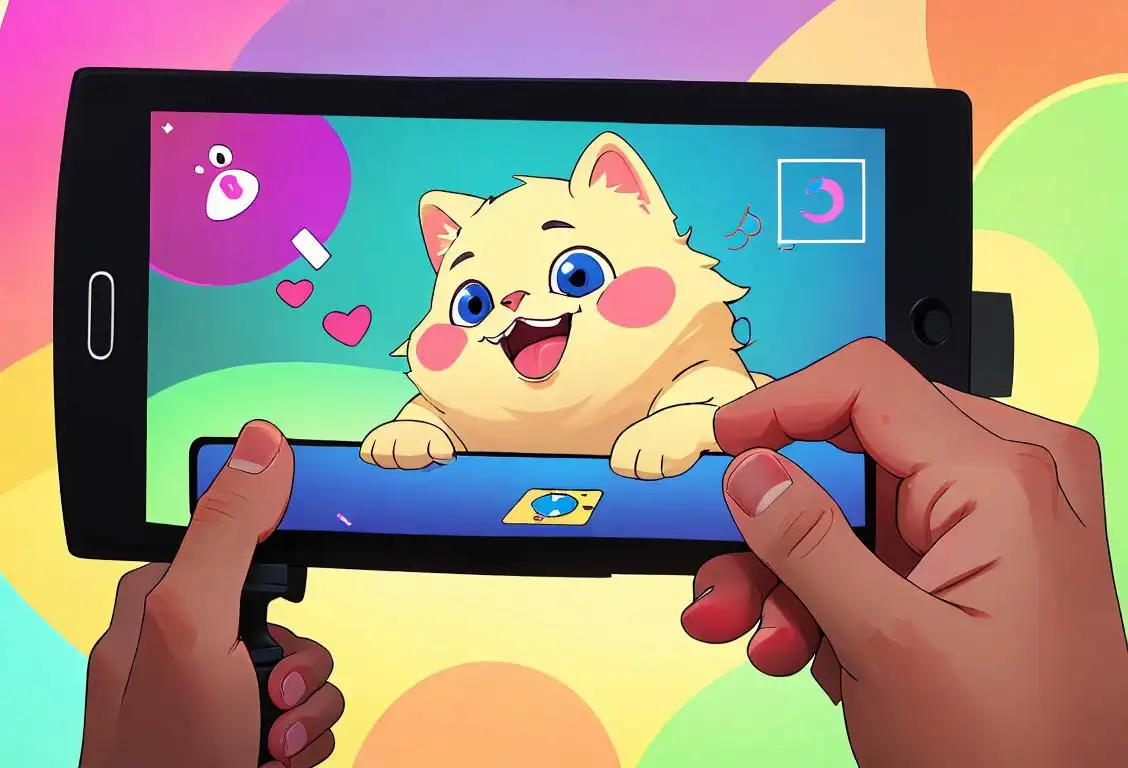
Hey there, my cord-cutting friend! Are you ready to celebrate National Cancel Your Cable Subscription Day? It's the perfect occasion to bid adieu to those pesky monthly cable bills and embrace a world of streaming goodness. So sit back, relax, and let me guide you through the fascinating internet history of this national day!
When is Cancel Your Cable Subscription Day?
It's national cancel your cable subscription day on the 14th September.
What's the Deal with National Cancel Your Cable Subscription Day?
On this glorious day, we celebrate the liberation from the clutches of cable companies. It's a day to say goodbye to that snooty cable guy and hello to a new era of streaming entertainment. We've come a long way since the days of bulky antennas and limited channel lineups. Now, with the power of the internet, we can customize our viewing experience and watch our favorite shows and movies on-demand.
The internet buzz surrounding this national day began on September 14, 2016, when mentions of it started popping up all over the web. People were sharing their success stories of cutting the cord and embracing a more affordable and flexible way of consuming media.
Streaming services like Netflix, Hulu, and Disney+ have become household names, providing us with a vast library of content at our fingertips. No more do we need to suffer through endless commercial breaks or pay for channels we never watch. With just a few clicks, we can access an endless selection of movies, TV shows, documentaries, and even live sports events.
So why celebrate National Cancel Your Cable Subscription Day? Well, it's a reminder that we have the power to choose how we consume entertainment. It's a celebration of freedom from unnecessary expenses and a way to encourage others to take the leap into the world of streaming.
History behind the term 'Cancel Your Cable Subscription'
1948
The birth of cable television
In 1948, cable television was introduced as a way to bring clear reception to areas with poor broadcast signals. Cable companies began installing lines to transmit television signals to homes, providing access to a wider range of channels compared to traditional over-the-air broadcasting.
1948
The invention of cable television
In 1948, the first cable television systems were introduced, allowing people to receive television signals through a coaxial cable rather than an antenna. This innovation expanded the number of channels available and provided better reception, revolutionizing the way people watched television.
1980
The birth of cable television
Cable television gained popularity in the 1980s as a way to access a wide range of channels and programming for a monthly fee. It offered viewers a larger selection of channels compared to traditional broadcast television.
2002
The rise of streaming services
In 2002, streaming services started gaining popularity as an alternative to traditional cable television. Companies like Netflix and Hulu began offering a wide range of movies and TV shows that could be streamed directly to viewers' devices. This marked the beginning of a shift towards digital entertainment consumption and contributed to the eventual cancellation of cable subscriptions.
1972
The birth of cable television
Cable television was first established in 1972, offering an alternative to traditional broadcast television. Cable networks provided subscribers with a wider variety of channels and programming options, revolutionizing the way people consumed content.
1948
Birth of cable television
In 1948, cable television was first introduced as a way to bring television signals to areas with poor reception. This technology allowed for the transmission of multiple channels over a single coaxial cable, providing viewers with a wider variety of programming options.
2000
Introduction of Digital Video Recorders (DVRs)
In the year 2000, digital video recorders (DVRs) started becoming popular. These devices offered the ability to record television shows and movies onto a hard drive, providing viewers with greater control over their viewing schedules. With the DVR, viewers no longer had to rely solely on live broadcasts or time slots set by cable companies to watch their favorite programs.
1972
Expansion of cable television
During the 1970s, cable television began to rapidly expand across the United States, offering viewers access to an increasing number of channels. The growth of cable TV was driven by the desire for better reception and a wider range of programming options not available on traditional broadcast networks.
2005
Online Streaming Services Take Off
Around the year 2005, online streaming services like Netflix and Hulu began gaining traction. These platforms allowed viewers to access a vast library of movies and TV shows on-demand, eliminating the need for a cable subscription to watch their favorite content. The convenience and affordability of online streaming services made them a popular alternative to traditional cable subscriptions.
1975
The rise of cable television subscriptions
During the 1970s, cable television subscriptions started to gain popularity. As cable networks offered a wide range of channels, including premium options like HBO, people saw the value in paying for a cable subscription to access a greater variety of content. Cable quickly became the standard way of watching TV for many households.
1975
Expansion of cable networks
During the mid-1970s, cable networks started to gain popularity. Channels like HBO (Home Box Office) and ESPN (Entertainment and Sports Programming Network) were launched. These new networks offered exclusive content and specialized programming, which attracted subscribers looking for more diverse entertainment options.
1996
The rise of streaming services
In 1996, Netflix was founded, revolutionizing the way people consumed entertainment. At first, it offered DVD rentals via mail, but later evolved into a streaming platform. This marked the beginning of a major shift in how people consumed television shows and movies.
2007
Launch of the first streaming device
In 2007, Roku introduced the first streaming device, which allowed users to easily stream content from various online platforms on their TV screens. This device, along with subsequent streaming devices from other companies, provided an even more convenient way to access streaming services and further fueled the decline of cable subscriptions.
1981
Cable subscriptions become popular
During the 1980s, cable subscriptions became increasingly popular as more households realized the benefits of expanded channel options and improved reception quality. Cable networks thrived, offering a diverse range of programming from news and sports to entertainment and specialized channels.
1992
The rise of cable subscriptions
By the 1990s, cable television became a dominant force in home entertainment. Millions of households subscribed to cable services, enjoying a variety of channels and programming. The convenience of accessing numerous channels from a single provider made cable subscriptions highly appealing.
1997
Digital cable technology emerges
In 1997, digital cable technology was introduced, allowing for improved picture and sound quality. This advancement further fueled the demand for cable subscriptions, as viewers wanted to take advantage of the enhanced viewing experience.
1984
Rise of premium cable channels
In 1984, premium cable channels like HBO (Home Box Office) gained popularity. These channels offered uncensored content, exclusive movies, and original programming. The availability of premium channels became a major incentive for viewers to subscribe to cable services.
2010
Rise of Over-the-Air Antennas
By 2010, over-the-air antennas made a comeback. With the transition from analog to digital broadcast signals, viewers realized they could access free high-definition over-the-air broadcasts with a simple antenna. This meant that popular network channels could be enjoyed without the need for a cable subscription, providing viewers with an affordable and viable option to cancel their cable subscriptions.
2013
Debut of original content on streaming platforms
In 2013, the streaming giant Netflix released its first original series, 'House of Cards.' This marked a significant turning point as streaming platforms began producing their own high-quality, exclusive content. With these original productions gaining critical acclaim and attracting a large audience, more viewers found value in canceling their cable subscriptions and relying solely on streaming services.
2005
The emergence of online video platforms
YouTube, the popular video-sharing platform, was launched in 2005. It allowed anyone to upload and share videos online, giving rise to a new form of entertainment. People started to watch more online content rather than being limited to traditional cable TV programming.
1994
The advent of satellite TV
In 1994, the direct broadcast satellite (DBS) technology was introduced, allowing TV signals to be transmitted via satellites directly to consumers' homes. This alternative to cable television offered even more channels and increased competition in the industry. Many households switched to satellite TV services, while others continued to enjoy cable subscriptions.
2000
Emergence of streaming services
The year 2000 marked the emergence of streaming services like Netflix. Initially, Netflix focused on DVD rentals by mail, but it soon transitioned into an online streaming platform. This shift introduced a new way to watch TV shows and movies without the need for a cable subscription.
2007
Streaming services enter the mainstream
In 2007, Netflix introduced its streaming service, allowing subscribers to watch content directly over the internet. This marked a significant change as viewers no longer had to wait for DVDs to arrive by mail. Other streaming platforms like Hulu also gained popularity, offering a wide range of shows and movies on-demand.
2015
Streaming Services Produce Original Content
In 2015, streaming services started venturing into original content production. Companies like Netflix and Amazon Prime Video began creating their own exclusive TV shows and movies, attracting viewers with the promise of unique and captivating content. This further solidified the notion that cable subscriptions were no longer necessary as streaming services offered a diverse selection of original programming.
2015
Introduction of live TV streaming services
In 2015, live TV streaming services like Sling TV and PlayStation Vue emerged, allowing subscribers to stream live television channels over the internet. This development bridged the gap between traditional cable and streaming, offering a wider selection of channels and the flexibility to watch live events without a cable subscription. Canceling cable became an even more viable option for many viewers.
1994
Emergence of satellite TV
In 1994, satellite TV became a significant competitor to cable television. Satellite TV providers, such as DirecTV and Dish Network, offered a wide range of channels and improved signal quality. This competition challenged cable companies to offer better deals and packages to retain their subscribers.
Netflix's streaming service launches
2007
In 2007, Netflix launched its streaming service, providing subscribers with on-demand access to a vast library of movies and TV shows. This marked the beginning of a shift in consumer behavior, as people started to realize the convenience and cost-effectiveness of online streaming.
2010
Streaming services gain popularity
The rise of streaming services like Netflix, Hulu, and Amazon Prime Video in the early 2010s started to change the way people consumed television content. These platforms offered on-demand access to a vast library of TV shows and movies, giving viewers the freedom to watch what they wanted when they wanted. Streaming services became an attractive alternative to traditional cable and satellite subscriptions.
2015
Cord-cutting becomes a trend
Around 2015, the term 'cord-cutting' emerged as a popular trend. People increasingly began canceling their cable subscriptions and opting for streaming services as their primary source of entertainment. The term 'cord-cutting' reflected the act of severing ties with traditional cable providers and embracing the freedom and flexibility of streaming services.
2007
The era of online video platforms
With the increasing popularity of online video platforms, such as YouTube, Vimeo, and Dailymotion, people discovered alternative sources of entertainment. These platforms offered user-generated content, independent productions, and a vast array of videos, challenging the dominance of traditional cable programming.
2020
Increased cord-cutting trend
In recent years, there has been a steady increase in the number of people canceling their cable subscriptions, commonly referred to as cord-cutting. With a multitude of streaming options available, including major players like Netflix, Amazon Prime Video, and Disney+, viewers now have a vast selection of content to choose from without the need for traditional cable television. This trend has reshaped the entertainment industry and transformed the way people consume media.
2005
Introduction of digital cable
In 2005, digital cable was introduced, allowing for improved picture and sound quality. This technology also enabled cable providers to offer additional services such as video-on-demand and interactive program guides. Digital cable further enhanced the viewing experience for subscribers.
2010
The rise of streaming platforms
The 2010s saw the rise of numerous streaming platforms such as Hulu, Amazon Prime Video, and HBO Now. These platforms offered subscription-based access to a wide range of content, including original programming, challenging the dominance of cable television.
2010
Cord-cutting becomes a popular trend
The term 'cord-cutting' emerged as an alternative to traditional cable subscriptions. People started cancelling their cable TV subscriptions and exclusively relying on streaming services to fulfill their entertainment needs. This trend gained momentum as more streaming options became available.
2020
Cord Cutting Movement
Throughout the 2010s, the cord-cutting movement gained significant momentum. People started canceling their cable subscriptions en masse and turning to online streaming services, over-the-air antennas, and digital downloads as their primary sources of entertainment. The convenience, affordability, and flexibility of these alternatives led to an increasing number of households ditching traditional cable services, signifying a cultural shift in the way people consume television and movies.
Present day
The ubiquity of canceling cable subscriptions
As of today, canceling a cable subscription has become so common that it is often seen as a symbol of the modern age. Many households have transitioned to streaming services, using internet-based platforms to access their favorite shows and movies. The phrase 'cancel your cable subscription' represents the shift in consumer behavior and the growing dominance of streaming as the prevailing method of consuming television content.
2010
The rise of streaming services
Throughout the 2010s, the popularity of streaming services such as Netflix, Hulu, and Amazon Prime Video skyrocketed. These services offered on-demand access to a vast library of movies and TV shows at a fraction of the cost of traditional cable subscriptions. Viewers began to consider canceling their cable subscriptions in favor of these streaming platforms.
2015
The rise of live TV streaming
Live TV streaming services like Sling TV and PlayStation Vue were introduced, allowing viewers to stream live programming over the internet. This further solidified the idea that viewers could ditch their cable subscriptions without sacrificing access to live events and current shows.
2015
Cord-cutting becomes a trend
Cord-cutting, the act of cancelling cable subscriptions in favor of streaming services, gained significant momentum in 2015. With the availability of high-quality streaming options and the rising costs of cable subscriptions, many households opted to cancel their cable subscriptions.
2010
Mainstream adoption of streaming services
Around 2010, streaming services like Hulu, Amazon Prime Video, and Disney+ gained mainstream popularity. These platforms offered extensive libraries of TV shows and movies, enabling viewers to watch their favorite content on-demand and without the need for a cable subscription.
Present
Cancel your cable subscription movement
In recent years, the concept of canceling cable subscriptions has gained momentum. With the availability and convenience of streaming services, many individuals are choosing to cut the cord and rely solely on internet-based entertainment options. This movement highlights the shift in consumer behavior and the evolving landscape of television consumption.
2017
Streaming services surpass cable subscribers
In 2017, the number of subscribers to streaming services surpassed the number of cable subscribers for the first time. This marked a significant shift in the way people consume television and paved the way for the ongoing decline of traditional cable subscriptions.
2015
Cord-cutting movement gains momentum
In 2015, the cord-cutting movement started to gain momentum. Cord cutting refers to the act of canceling a traditional cable or satellite TV subscription in favor of alternative forms of entertainment, such as streaming services. The availability of high-speed internet and the proliferation of streaming devices contributed to the increasing number of people canceling their cable subscriptions.
2019
Streaming giants take the lead
Streaming services such as Netflix, Amazon Prime Video, and Disney+ became dominant players in the entertainment industry, offering a vast library of original shows and movies. With the availability of high-quality content and convenience, cable subscription cancellations surged even more.
Present
The decline of cable subscriptions
In the present day, streaming services have continued to dominate the entertainment landscape. Many cable companies now offer internet-based streaming options as they adapt to the changing preferences of consumers. Cancelling your cable subscription has become a common choice for those seeking a more personalized and flexible viewing experience.
Present
The cultural impact of canceling cable
Canceling cable subscription has become a cultural phenomenon, symbolizing a shift in how people consume television and entertainment. It signifies the power of choice, where viewers can select specific content from a variety of streaming services, catering to their preferences. This trend has reshaped the media landscape and encourages more innovative content creation.
Present
Cancel your cable subscription
Today, canceling your cable subscription has become a popular choice among consumers. With the abundance of streaming options available, viewers have the freedom to choose what content they want to watch and when they want to watch it. This shift in consumption habits has revolutionized the entertainment industry and forced traditional cable providers to adapt their business models to remain competitive.
Did you know?
Did you know that the average American household spends over $100 per month on cable TV services? That's a whole lot of dough that could be better spent on snacks for your binge-watching sessions!Tagged
fun finance technologyFirst identified
14th September 2016Most mentioned on
14th September 2016Total mentions
216Other days
Cancel Your Cable Subscription Day
Mathematics Day
Honesty Day
Bison Day
Philanthropy Day
Radio Day
Splurge Day
Video Games Day
Manufacturing Day
Happiness Day


